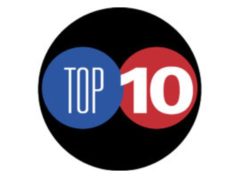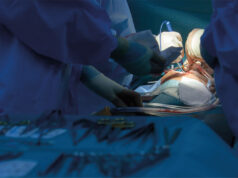
If you had cancer you would go to a cancer center where you would get a multidisciplinary approach,” SVS President Joseph Mills, MD, tells VS@VAM, drawing on this example to highlight the importance of multidisciplinary teams for amputation prevention in patients with diabetes and peripheral arterial disease (PAD)—something, he says, is currently lacking in many centers.
Mills, who is the chief of the Division of Vascular Surgery and Endovascular Therapy at Baylor College of Medicine in Houston, Texas, is one of the architects of the “toe and flow” model of multidisciplinary care that seeks to foster greater alignment between specialties in the field of limb salvage—chiefly podiatry and vascular specialists.
This concept is running through an Education Session taking place on Thursday, June 20 (3:30–5:00 p.m. in the West Building, Level 1), co-moderated by Mills and Lauren Gordon, MD, a vascular surgery resident at the University of Toronto in Toronto, Canada, and seeks to address the fragmented approach to limb salvage in many centers. The session will bring together leaders from multiple specialties to highlight algorithms of care, new approaches to assessment, revascularization, wound care and teamwork, in order to look at how to broaden access to limb salvage care to underserved communities.
A cancer patient can be faced with several treatment options, requiring experts from numerous fields to come together to work up a therapeutic plan, says Mills, returning to his analogy to sum up the current state of treatment for chronic limb-threatening ischemia (CLTI) and diabetic foot care. “That does not routinely happen with the diabetic foot. What more often happens is the patient gets admitted to the hospital, somebody swabs the wound, random care ensues, and important things get missed.”
Toe and flow has its roots in Arizona, where, whilst practicing at the University of Arizona, Mills, along with David Armstrong, DPM, now at the University of Southern California, established the Southern Arizona Limb Salvage Alliance—SALSA—to foster a closer relationship between podiatry and vascular surgery clinics, and to harmonize the patient referral, evaluation and treatment pathway.
Outlining how the toe and flow model works in his practice today at STEP (Save The Extremity Program) at Baylor College of Medicine, Mills says it doesn’t matter which specialist sees the patient first—they will be treated according to the same algorithm. “If they get sent to a podiatrist and it turns out they have had three failed angioplasties and their blood flow is poor, they meet a vascular surgeon that same day. If they get sent to the vascular surgeon and it turns out it is not really a blood flow issue [and that] they need better offloading or better shoes, then they see a podiatrist. The idea is to not penalize the patient because our system is disorganized.”
Of the session at VAM, Mills tells VS@VAM that the patients’ voice will be heard with involvement from patient representatives, “to bring home how this seemingly simple problem can cause a lot of issues for patients in their lives.”
“Most of the doctors in the audience will probably get this, but to hear what happens to patients and how they perceive their care is really, really important, because often in healthcare we look at outcomes from the standpoint of the system or the doctor, and we forget about the patient,” he comments.
The session also features presentations unpacking some of the recent data underpinning advances in CLTI and diabetic foot care, and discussion of key components of team development. “This is a huge issue for our patients and we need to do better,” says Mills of what he hopes attendees will gain from joining the session. “There are barriers everywhere to setting up this type of system, but they can all be overcome. It is not hard to find a toe partner or a flow partner, and to really make a difference in your local hospital and in your local practice. The barriers that the system sets up can be overcome by clinicians who think this is a problem and want to help patients get better outcomes.”












